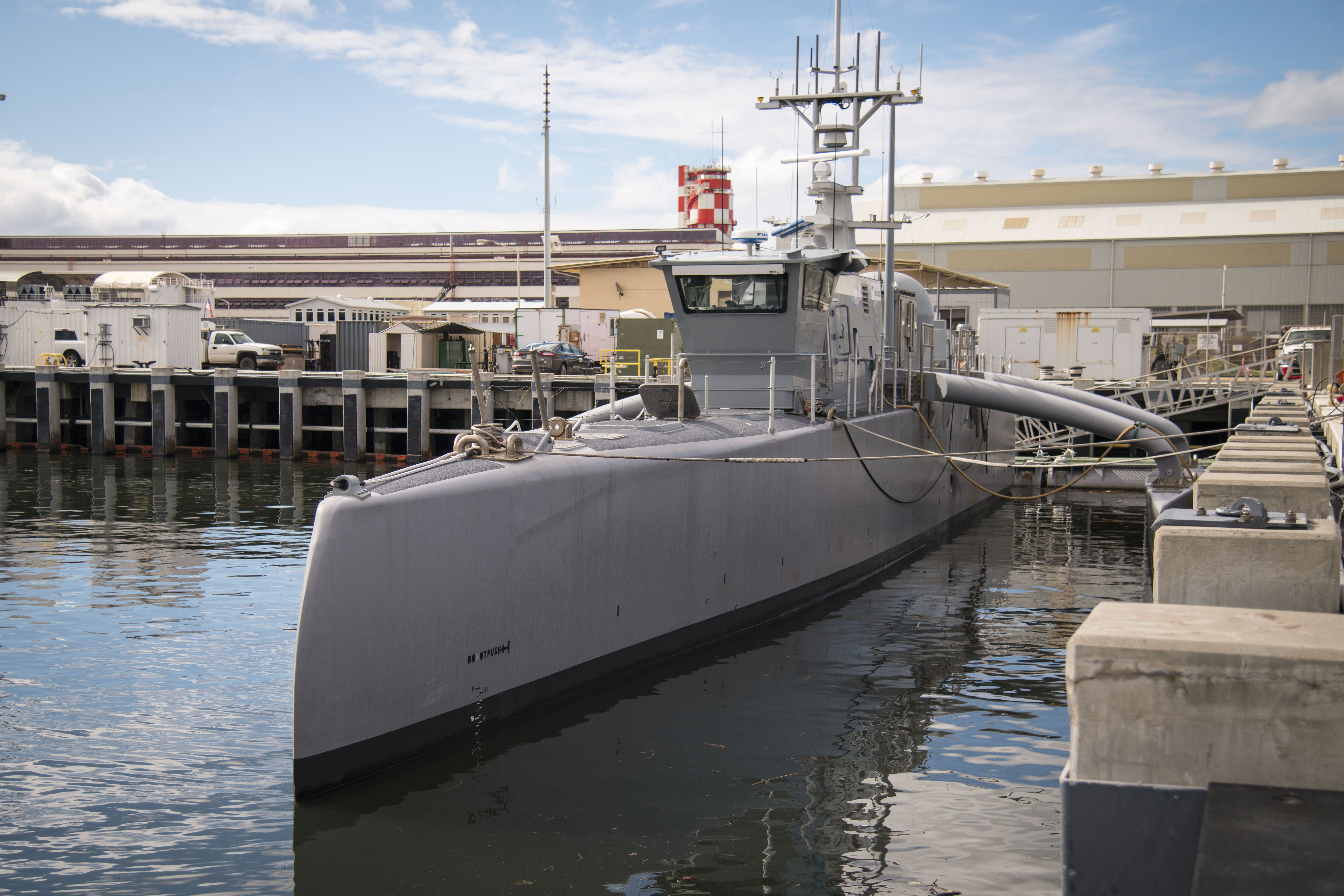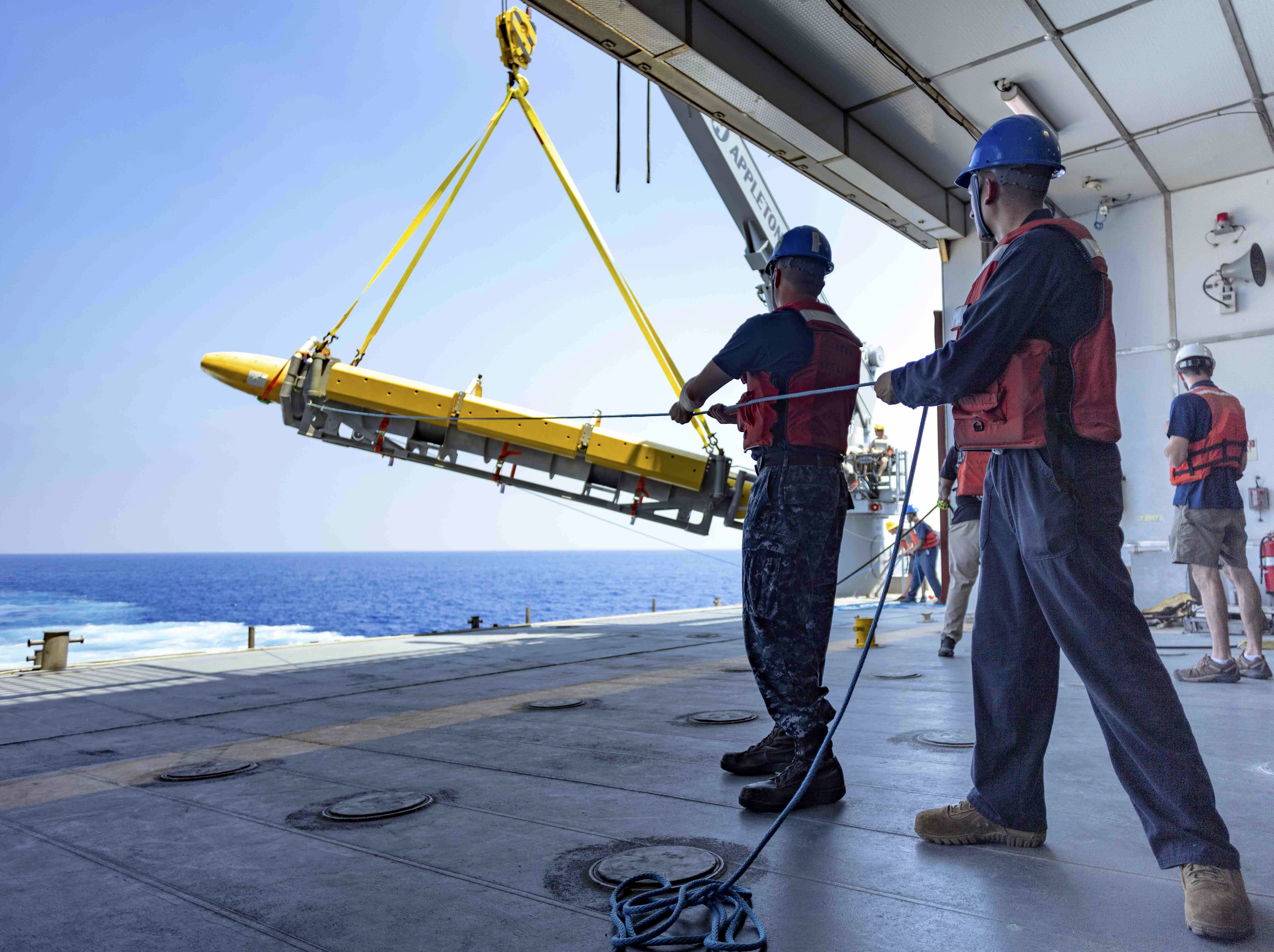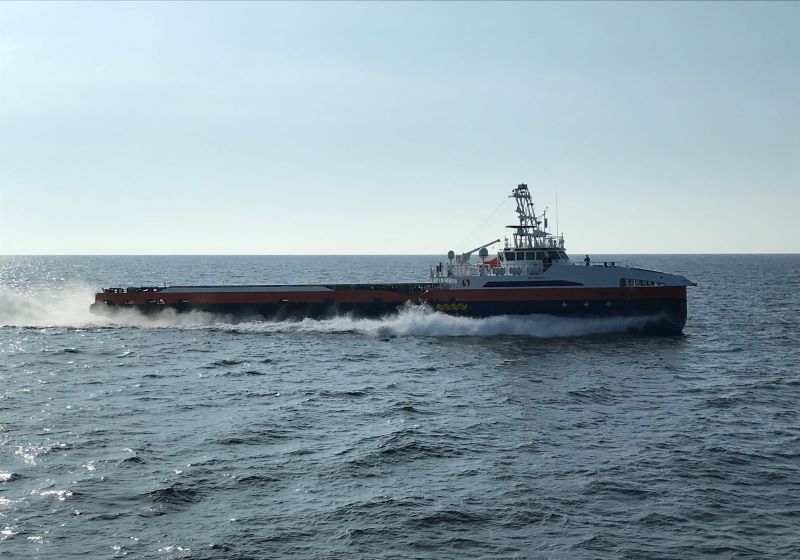
A longstanding slogan for the best use of unmanned systems is to perform “dull, dirty and dangerous” missions instead of humans.
Early unmanned systems development embraced this idea, with the Navy developing and fielding systems to “mow the lawn” in minefields and to conduct round-the-clock maritime surveillance.
Now, with the Navy on the cusp of taking delivery of a small fleet of larger unmanned surface vessel prototypes and developing the battle network that will connect them to the fleet, the unmanned maritime system program office is overseeing several “initiatives will help focus on what unmanned systems can bring to the dangerous missions and not just the dull and dirty ones,” program manager Capt. Pete Small said earlier this month.
The Navy today has 15 unmanned underwater vehicles and seven unmanned surface vessels of all shapes and sizes in fabrication today, Small said during a briefing at the annual Surface Navy Association symposium. About two years from now, the Surface Development Squadron-1 (SURFDEVRON) organization that oversees medium and large USVs will have seven prototypes at its disposal for a range of activities for experimentation, fleet integration, concept of operations development and reliability testing.
Early unmanned systems focused on finding mines and other underwater obstacles or conducting maritime surveillance: missions where sensors will be finding mostly nothing, until an object of interest suddenly appears, and the system can pick out the object and alert a human, rather than the human watching all the nothingness in real time.
But new operating concepts, as well as the recent tri-service maritime strategy and the chief of naval operations’ Navigation Plan, call for unmanned systems to take on a much more active role in warfighting, Small said.
Among the ideas the Navy was most interested in was arming Large USVs with missiles, an idea that was quickly shot down by lawmakers.

ATLANTIC OCEAN (July 24, 2019) A Knifefish unmanned undersea vehicle (UUV) training model undergoes crane operations aboard the Military Sealift Command expeditionary fast transport vessel USNS Spearhead (T-EPF 1) as part of a training exercise enabling mine countermeasure missions (MCM) from an EPF as a Vessel of Opportunity (VOO). Knifefish is a medium-class mine countermeasure UUV designed for deployment off the littoral combat ship. (U.S. Navy photo by Master-at-Arms 1st Class Alexander Knapp/Released)
Small said in his briefing that the Navy was making progress towards that vision, with plans to conduct an analysis of alternatives for offensive surface fires, including the vertical launch system-enabled LUSV concept, and plans to expand land-based prototyping efforts for hull, mechanical and electrical (HM&E) system automation and reliability to address congressional concerns.
“We understand what their concerns are,” Small said of lawmakers on the House and Senate armed services committees.
“They did, I’ll say, slow down our plans to develop a LUSV with VLS very specifically and very carefully. In the same regard, they very specifically did support our efforts to continue the experimentation that I described, especially with our Overlord USVs and Sea Hunters and our pursuit of hull, mechanical and electrical automation and reliability. So they did very much slow us down on LUSV with VLS, and we’ll assess and continue that dialogue, but they very much supported our continuing efforts to demonstrate the technologies that they’re asking us to respond to.”
Lawmakers worried the Navy was moving so quickly on unmanned vessels despite no proof that their HM&E systems could operate autonomously for weeks or months without human intervention or maintenance. On the VLS-enabled LUSV idea, lawmakers worried that the vessel could be hacked or physically overtaken by an adversary, among other concerns related to an unmanned vessel launching deadly missiles.
The Navy is getting after the latter concerns through its development of the Navy Operational Architecture (NOA) and Project Overmatch, which would net manned and unmanned ships and aircraft together to allow the best sensor to direct the best shooter to engage an adversary – regardless of whether the sensor and shooter was manned or unmanned.
On the reliability side, Small said ongoing at-sea testing was proving out the HM&E reliability and the maturity of the autonomy systems, and that upcoming land-based testing would rigorously test the HM&E systems further. As a result of the delays and changed strategy on LUSV procurement, the Navy awarded six contracts to industry for LUSV studies, and Small said his team was in regular talks with the industry teams and had a particular focus on reliability.

At sea, already the sailors at SURFDEVRON have had several opportunities to take a prototype of the common controller being developed by Small’s program office and use it to control an Overlord large USV during at-sea operations. In one case, as USNI News first reported, one of the two Pentagon-bought Overlord USVs transited from the Gulf Coast to Southern California autonomously. Small said SURFDEVRON sailors from an operations center in San Diego managed the transit.
“This long transit was over 4,700 nautical miles total traveled, and over 97 percent of those miles were accomplished in autonomy mode. The only time that vessel was not in autonomy mode during the transit was during the brief period of time where it actually transited the Panama Canal,” he said.
That same vessel had in May transited from the Gulf Coast to the East coast, traveling more than 3,000 nautical miles in seven days in autonomous mode.
Since arriving in California, the Overlord USV participated in exercise Dawn Blitz, marking the first time manned and unmanned systems had been integrated during this exercise. Small said the vessel spent more than five days at sea, with 98 percent of that time in autonomous mode while being controlled by SURFDEVRON sailors ashore.
“Not only are we demonstrating increasingly capable unmanned surface vehicle technology, but we are rapidly advancing the Navy’s ability to conduct extended unmanned surface vehicle operations via a remote control interface,” he said.
The Sea Hunter medium USV has operated at sea alongside warships for several advanced tactical training events, again with SURFDEVRON sailors controlling the vessel.
By Fiscal Year 2023, Small said SURFDEVRON would operate four Overlord USVs – two bought by the Pentagon, two bought by the Navy – as well as Sea Hunter and sister ship Sea Hawk, and an MUSV prototype the Navy awarded to L3Harris last year.





